|
Broad Street Basin
part 3 |
Shelton's Timber YardThe area alongside Canal
Street, next to the canal was occupied by
Shelton’s saw mill and timber yard. The business
is listed in Pigot & Company’s 1842
Staffordshire Directory as follows:
Richard
Shelton, brick makers, Canal Street, and Richard
Shelton, timber merchant (and slate), Canal
Street.
In White’s Staffordshire
Directory of 1851 the business is listed as
Richard Shelton, timber merchants (and lead
etc.), saw mills, Canal Street. Richard
Shelton’s house is listed as being in Queen
Street.
The directory listings show
that although predominantly a timber yard, with
timber arriving on canal boats, other items,
including lead, slate, and presumably clay were
transported here in the earlier years.
The listing in the 1908
Wolverhampton Red Book is as follows:
Shelton &
Sons, timber merchant, Canal Street.
In the 1930, and the
1938/39 Wolverhampton Red Books the listing is:
R. Shelton & Sons, timber merchants, Broad
Street.
It is not listed in the later books, so
presumably the business closed around the time
of the Second World War.
|
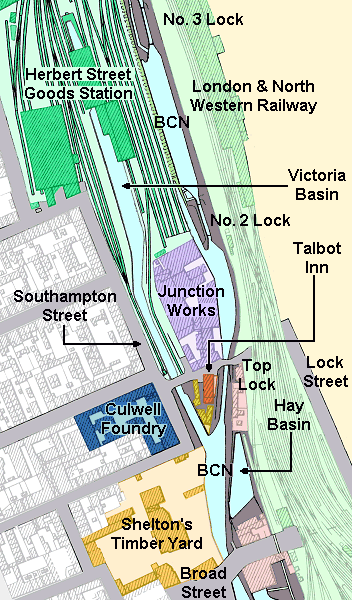 |
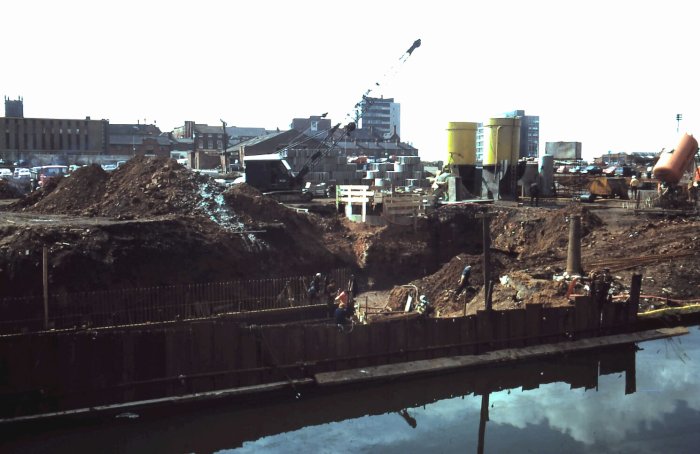
The remains of
Shelton's timber yard are removed to make
way for Ring Road St Patricks. Courtesy of
David Parsons. |
|
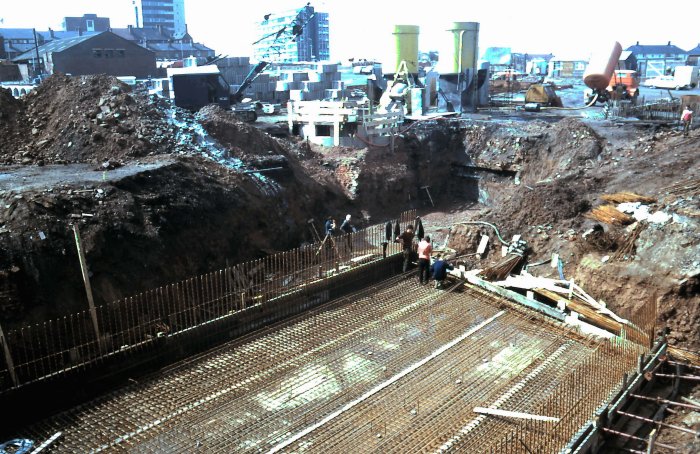
Another view of the
site of Shelton's timber yard. Courtesy of
David Parsons. |
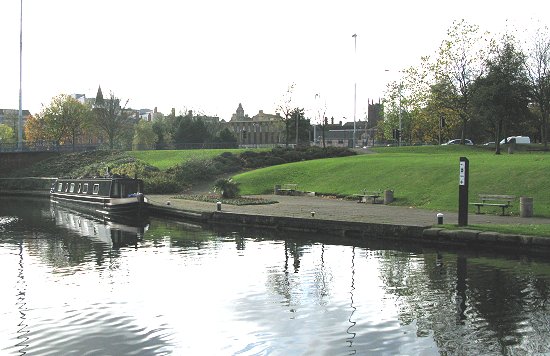 |
The site of Shelton's
timber yard as it is today. |
|
Joseph Evans &
Sons (Wolverhampton) Limited
Joseph Evans, a charcoal
merchant, founded the company in 1830. The firm
was based in Culwell Foundry, on the corner of
Southampton Street and Montrose Street. The
buildings are marked on the 1871 Ordnance Survey
map, although the factory may have been there in
1842, because three smaller buildings on the
site, are marked on the Tithe map.
The company is listed in
Pigot & Company’s 1842 Staffordshire Directory
as Joseph Evans, iron founders and stove grate
manufacturers, Railway Street, and also in the
1845 directory as Joseph Evans, iron founder,
Culwell Iron Foundry, Railway Street. Presumably
the company had an office in Railway Street and
used one of the canal wharves.
In the 1880 Wolverhampton
directory the company is described as follows:
Joseph Evans and Sons,
hydraulic and general engineers, manufacturers
of every description of pumps for steam, house,
hand, or other power; steam engines, steam
stamps, presses, brewery plant, hot water
warming apparatus for conservatories, and
public buildings etc. Culwell Foundry,
Southampton Street.
In the 1894 Wolverhampton
directory they are listed as iron founders,
engineers, and machinists.
On the 1901 Ordnance Survey
map the Southampton Street factory is marked as
disused, so by that time the company had moved
to its later location; Culwell Works, Woden
Road, Heath Town, where all kinds of castings,
and pumps, both large and small were produced
until the business closed in the mid 1960s.
Items from the company's 1911 'Pumps and Pumping Machinery' catalogue.
|
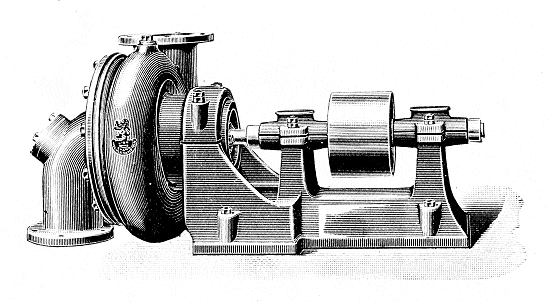 |
An Evans' Improved Centrifugal Pump. |
| An Evans' Treble Barrel Ram Pump. |
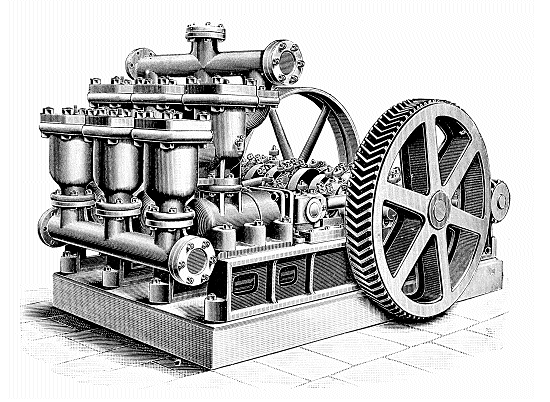 |
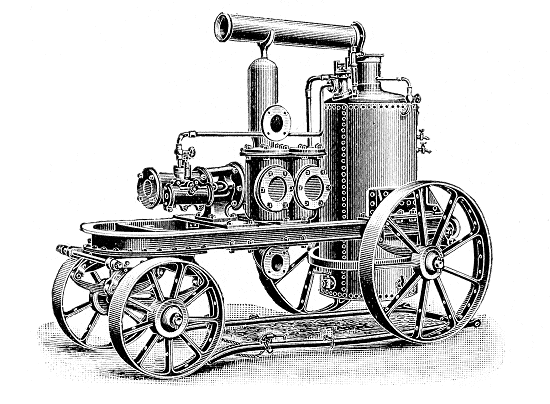 |
An Evans' Portable 'Cornish' Steam Pump and Boiler. |
| An Evans' Compound Duplex Pumping Engine. |
 |
|
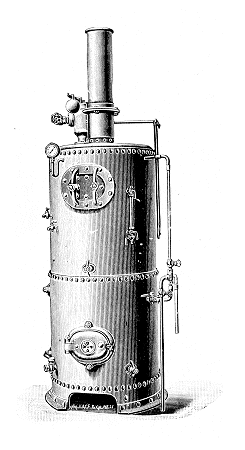
An Evans' Vertical Cross-Tube Boiler. |
|
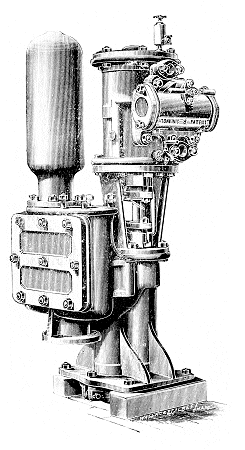
A Vertical 'Cornish' Steam Pump. |
|
Herbert Street Goods
Station
Victoria Basin was built by
the Shrewsbury & Birmingham Railway Company in
1848/1849 as part of the canal and railway
interchange facility at their new Wolverhampton
goods station. Rail access was provided by a
single track from the Shrewsbury & Birmingham’s
main line, which crossed the Cannock Road over a
bridge just west of the existing railway bridge.
It became known as the Victoria Basin Branch.
The goods station consisted
of a long wooden building that covered the basin
and three sidings. The interchange facility
became extremely important to the railway
company because of its disagreement with the
London & North Western Railway over the use of
the Stour Valley Line to Birmingham. For a time
it was the only way that the Shrewsbury &
Birmingham Railway could get its goods into
Birmingham.
As relations between the
two railway companies deteriorated, the
Shrewsbury & Birmingham decided to amalgamate
with the London & North Western’s deadly rival,
the Great Western Railway which arrived in
Wolverhampton in 1854.
|
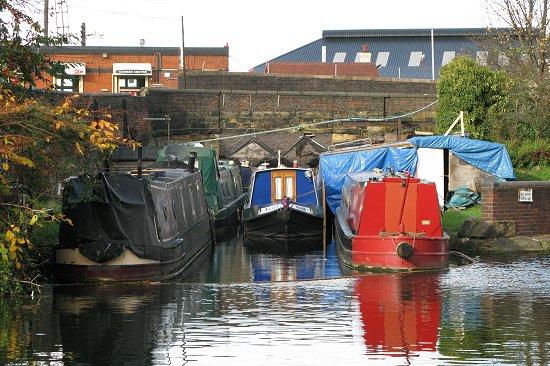 |
All
that remains of Victoria basin
is a short length of water that
extends to the blocked-up bridge
at the back. |
|
The Great Western Railway
had broad gauge track up to Wolverhampton, and
standard gauge track to the north. As a result
mixed gauge track was laid into the goods
station so that goods could be transferred from
broad gauge to standard gauge wagons.
In 1859 the buildings were
rebuilt and a 3 storey brick warehouse for grain
and sugar was added along with several brick
built offices. In April 1869 the mixed gauge
track was replaced with standard gauge track
when broad gauge operation was abandoned. By
1901 many more sidings had been added along with
a travelling crane. Wolverhampton had a thriving
cattle market, and so every week a large number
of animals would arrive at the goods station
before being herded through the town to market.
Many of them would return after being sold, for
transportation to a new destination.
Next door by the canal,
stood Junction Works, which had closed by 1919.
The railway company acquired the site and used
it to extend the goods station, presumably at
the same time that Victoria Basin was filled-in.
In the early 1930s many of
the slums on the western side of Stafford Street
were demolished. This included houses in Herbert
Street, Faulkland Street, Little’s Lane, and
Southampton Street. The railway company acquired
much of the land in order to extent the
facilities at the goods station. In 1931
Victoria Basin was filled-in, and new buildings
were erected including a larger goods shed with
two platforms 500ft. long.
After nationalisation in
1948, the facilities remained much as before,
until 1960 when automatic goods handling
equipment was installed. The goods station finally
closed around the time when the Low Level
railway station was converted into a Parcels
Concentration Department in 1970. It opened on
6th April 1970 and could handle up to 8,000
parcels a day. In the early 1970s the site
was acquired by Carvers (Wolverhampton) Limited,
builders merchants.
The Talbot Inn
Between the Victoria Basin
and Littles Lane Bridge, opposite the cottages
and the mission room, stood the Talbot Inn. It is
marked on the 1842 Tithe map, and is listed in White’s 1851 Staffordshire Directory
as follows: The Talbot, William Thatcher, Littles Lane. The pub can be seen in the
background of an existing photograph from 1901, and is
marked on the 1919 Ordnance Survey map.
Some of the
the licensees were as
follows:
|
1850 to 1851 |
William Thatcher |
|
1855 to 1861 |
Thomas Hughes |
|
1864 |
Jane Hughes |
|
1870 to 1874 |
William Picken |
|
1881 |
William Bacon |
|
1884 to 1921 |
Josiah Edwards |
On Tuesday 2nd March,
1875 an inquest was held at the inn following
the death of a man whose body had been taken
out of the canal near Top Lock on the previous
Sunday. The man was Patrick McCall, a 45 years
old labourer. He had been drinking heavily the
previous evening and so the coroner returned a
verdict of an uncertain means of death and said
that “He was afraid this was another addition to
the long list of fatalities resulting from
drink.”
|
| The
view from Top Lock.
The Talbot
Inn stood on the opposite side
of the canal. |
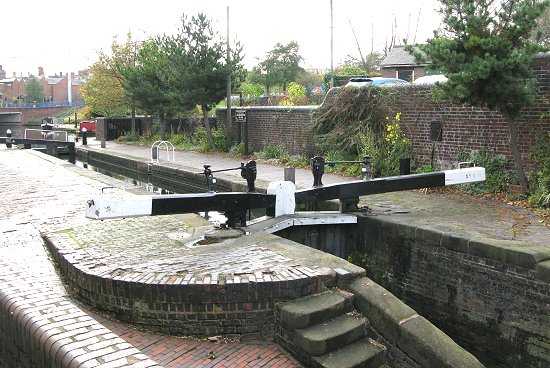 |
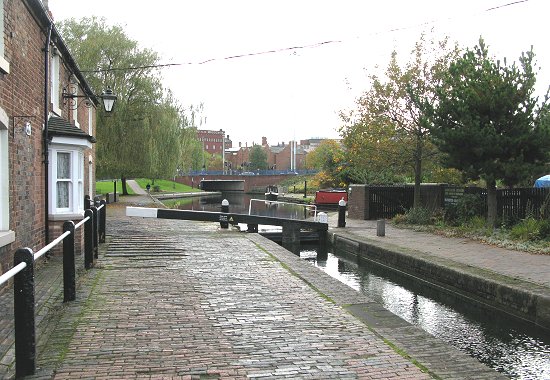 |
Top
Lock and the cottages. |
| Top
Lock and Littles Lane Bridge. |
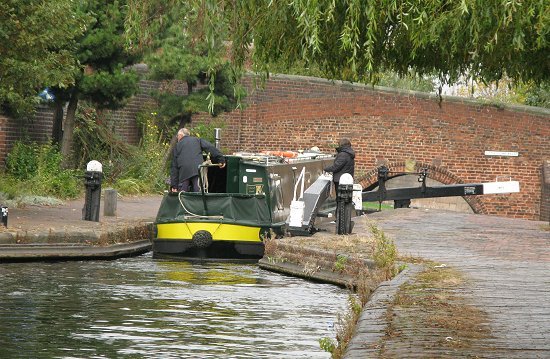 |
 |
Return to the
previous page |
|